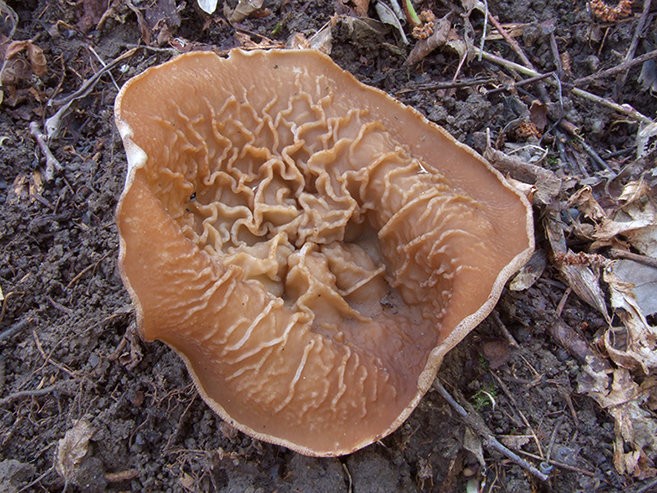Veined saucer (Disciotis venosa)
- Department: Ascomycota (Ascomycetes)
- Subdivision: Pezizomycotina (Pezizomycotins)
- Class: Pezizomycetes (Pezizomycetes)
- Subclass: Pezizomycetidae (Pezizomycetes)
- Order: Pezizales (Pezizales)
- Family: Morchellaceae (Morels)
- Genus: Disciotis (Saucer)
- Type: Disciotis venosa (veiny saucer)
- Discina veinata
- Venous pool

Spread:
The veiny saucer is common in the temperate zone of the Northern Hemisphere. Pretty rare. Appears in spring, simultaneously with morels, from mid-May to early June. It is found in coniferous, mixed and deciduous (usually oak and beech) forests, including floodplain forests, on sandy and clay soils, in humid places. Occurs singly and in small groups. Often grows together with the semi-free morel (Morchella semilibera), often associated with butterbur (Petasites sp.). It is probably a saprotroph, but due to its relationship with morels, it is possible that it is at least a facultative mycorrhizal fungus.
Description:
The fruiting body is an apothecium with a diameter of 3-10 (up to 21) cm, with a very short thick “leg”. In young mushrooms, the “cap” has a spherical shape with edges curving inward, then becomes saucer-shaped or cup-shaped, and finally prostrate with a sinuous, torn edge. The upper (inner) surface – hymenophore – is smooth at first, later becomes tuberculate, wrinkled or veiny, especially closer to the middle; color varies from yellowish-brown to dark brown. The lower (outer) surface is lighter in color – from whitish to grayish-pinkish or brownish, – mealy, often covered with brownish scales.
The “leg” is strongly reduced – short, thick, 0,2 – 1 (up to 1,5) cm long, whitish, often immersed in the substrate. The pulp of the fruiting body is fragile, grayish or brownish, with a characteristic smell of chlorine, which, however, disappears during heat treatment. Spore powder is white or cream. Spores 19 – 25 × 12 – 15 µm, smooth, broadly ellipsoid, without fat droplets.

The similarity:
Due to the characteristic smell of bleach, it is difficult to confuse the Saucer with other fungi, for example, with representatives of the genus Petsitsa. The largest, mature, dark-colored specimens are slightly similar to the common line.









